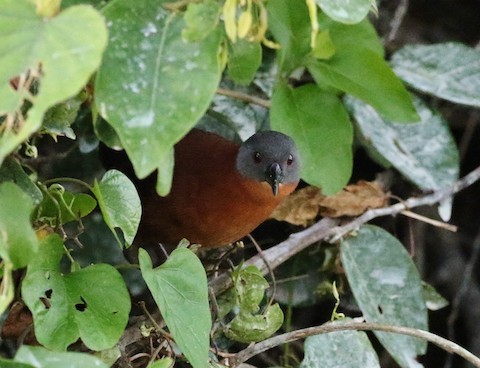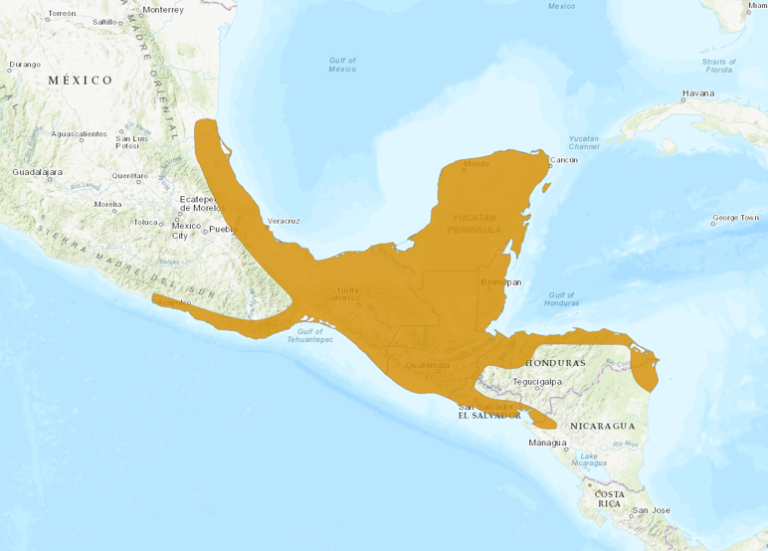Birdfinding.info ⇒ Common in its limited range. Habitually furtive, but regularly emerges in early morning and late afternoon. Sites where it can usually be heard and often seen include: San Miguel Sewage Treatment Plant on Cozumel; the Malecón in downtown Cancún; the archaeological sites of Cobá and Muyil; the Ría Lagartos area; the Santa Alejandrina marshes east of Minatitlán, Veracruz; in Belize, Crooked Tree Wildlife Sanctuary, New River Lagoon, and San Ignacio; in Guatemala, the shore of Lake Petén Itzá beside Flores Airport and Laguna del Tigre National Park; and in Honduras, Lagoa Yojoa.
Ruddy Crake
Laterallus ruber
Tropical wetlands of Middle America from eastern Mexico to Nicaragua.
The bulk of the population occupies the Caribbean lowlands from central Veracruz east through the Yucatán Peninsula (including Cozumel), then southeast to northern Honduras.
More localized north to southern Tamaulipas, in the Pacific lowlands mainly from Chiapas to Lake Nicaragua, and east through the interiors of Honduras and central Nicaragua to the Mosquitia.
Very local or sporadic in Pacific coastal lowlands west of the Isthmus of Tehuantepec, with scattered records from the vicinities of Manzanillo (Colima), Acapulco (Guerrero), and Huatulco (Oaxaca).
Identification
A striking sparrow-sized rail with predominantly bright ruddy plumage, a slaty-gray helmet and darker brown wings and tail.
The rich reddish tones of its body vary from chestnut to rufous to cinnamon.
The bill is blackish and the legs vary from dull olive to dark brown.

Ruddy Crake. (Flores, Petén, Guatemala; January 27, 2019.) © Jorge Dangel
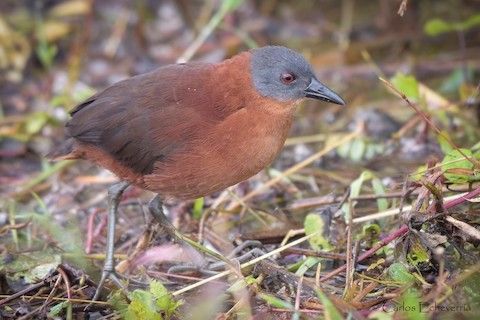
Ruddy Crake. (Flores, Petén, Guatemala; December 18, 2017.) © Carlos Echeverría

Ruddy Crake. (Flores, Petén, Guatemala; December 18, 2017.) © Carlos Echeverría

Ruddy Crake. (Flores, Petén, Guatemala; January 27, 2019.) © Jorge Dangel
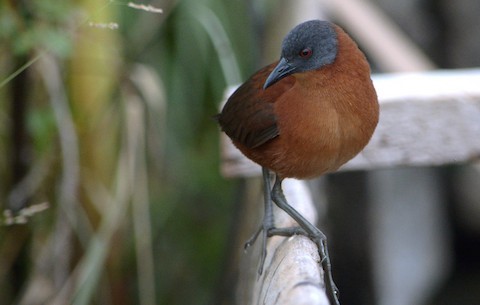
Ruddy Crake. (Flores, Petén, Guatemala; December 15, 2018.) © Jorge Dangel
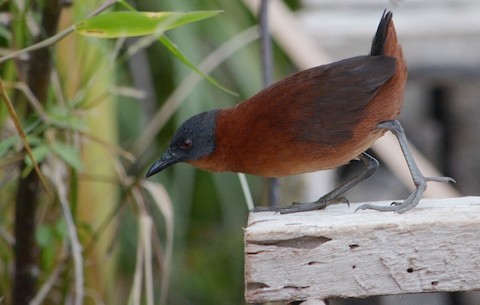
Ruddy Crake. (Flores, Petén, Guatemala; December 15, 2018.) © Jorge Dangel
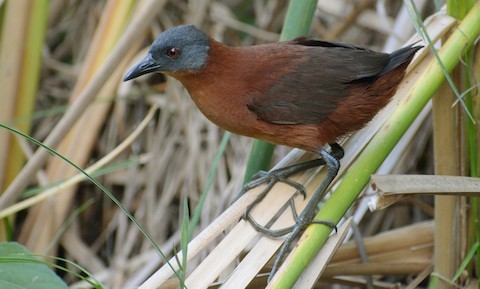
Ruddy Crake. (Flores, Petén, Guatemala; January 27, 2019.) © Jorge Dangel
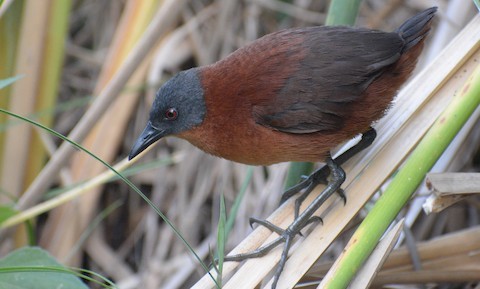
Ruddy Crake. (Flores, Petén, Guatemala; January 27, 2019.) © Jorge Dangel
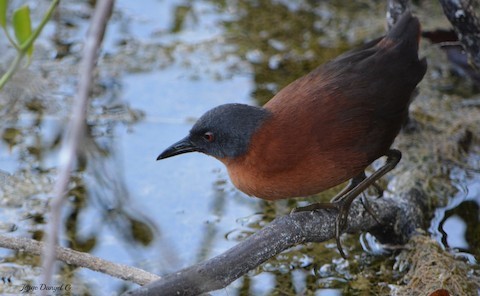
Ruddy Crake. (Flores, Petén, Guatemala; January 24, 2017.) © Jorge Dangel

Ruddy Crake. (Flores, Petén, Guatemala; August 12, 2017.) © Jorge Dangel
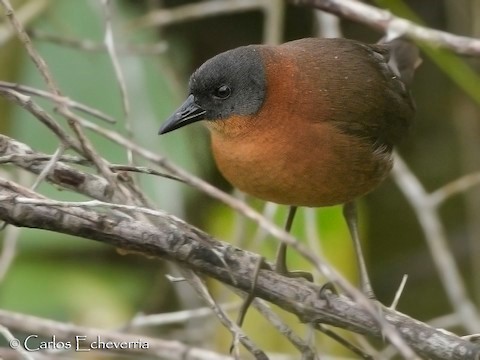
Ruddy Crake. (Flores, Petén, Guatemala; December 29, 2016.) © Carlos Echeverría

Ruddy Crake. (Flores, Petén, Guatemala; February 22, 2020.) © Jorge Dangel

Ruddy Crake. (Punta Nizuc, Quintana Roo, Mexico; March 27, 2016.) © Knut Hansen

Ruddy Crake. (Flores, Petén, Guatemala; December 18, 2017.) © Carlos Echeverría
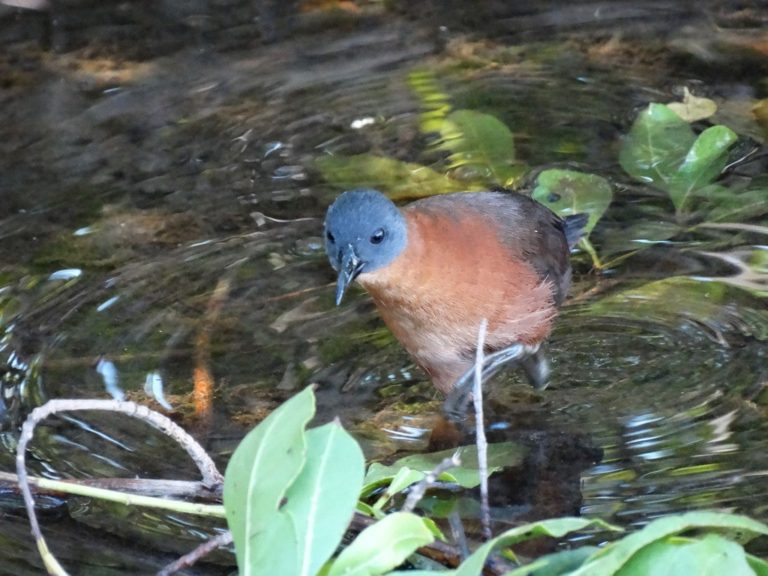
Ruddy Crake. (Benito Juárez, Quintana Roo, Mexico; January 27, 2014.) © Alex Pacheco

Ruddy Crake. (San Miguel Sewage Treatment Plant, Cozumel, Mexico; February 26, 2018.) © Tom Benson

Ruddy Crake. (Bello Caribe, San Miguel, Cozumel, Mexico; August 12, 2018.) © Jesse Anderson

Ruddy Crake. (Puertas Azules, Miraflor, Estelí, Nicaragua; July 9, 2020.) © Danilo Moreno
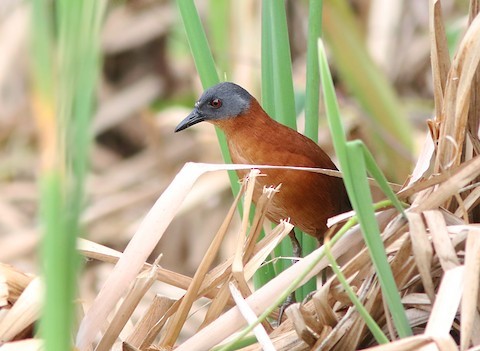
Ruddy Crake. (San Miguel Sewage Treatment Plant, Cozumel, Mexico; June 5, 2016.) © Amy McAndrews
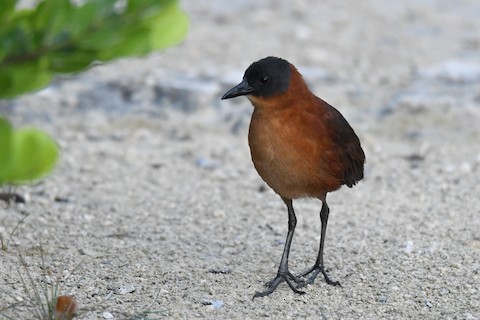
Ruddy Crake. (Bello Caribe, San Miguel, Cozumel, Mexico; August 12, 2018.) © Jesse Anderson

Ruddy Crake. (Flores, Petén, Guatemala; December 18, 2017.) © Carlos Echeverría
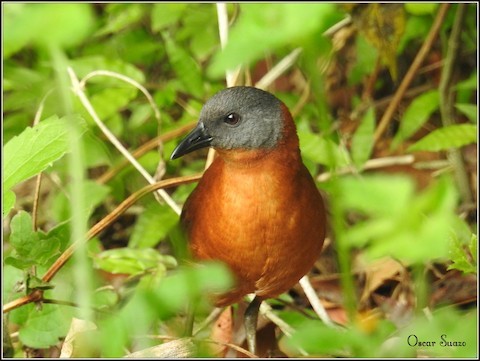
Ruddy Crake. (El Zapote, Siguatepeque, Comayagua, Honduras; June 1, 2019.) © Oscar Rolando Suazo Ortega

Ruddy Crake. (Campisa, San Pedro Sula, Honduras; February 10, 2018.) © Francisco Dubón
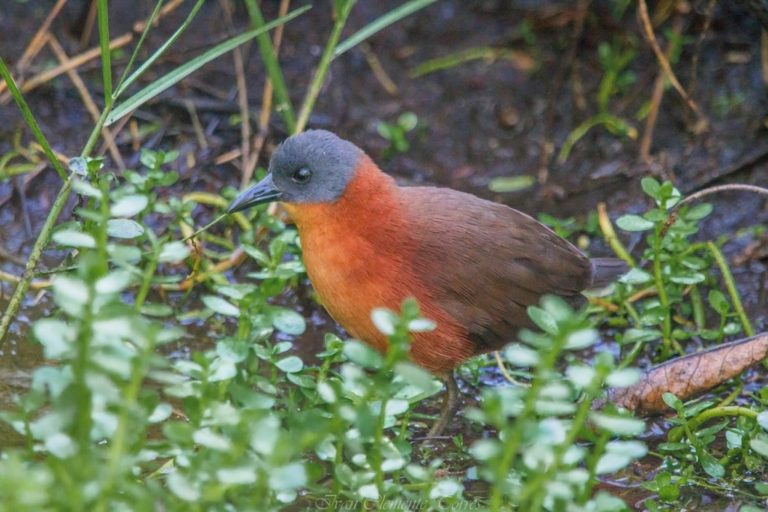
Ruddy Crake. (Yucatán, Mexico; January 18, 2020.) © Ivan Clemente Torres
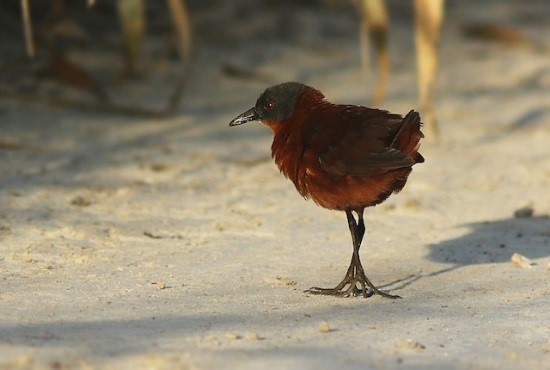
Ruddy Crake. (San Miguel Sewage Treatment Plant, Cozumel, Mexico; July 16, 2017.) © Amy McAndrews
Immatures are blackish-brown overall, often with a chestnut patch on the nape (thus resembling Black Rail) and paler along its midline from throat to belly.

Ruddy Crake, immature. (Yucatán, Mexico; March 16, 2020.) © Ivan Clemente Torres

Ruddy Crake, immature, showing pale midline from throat to belly. (San Miguel Sewage Treatment Plant, Cozumel, Mexico; July 16, 2017.) © Amy McAndrews
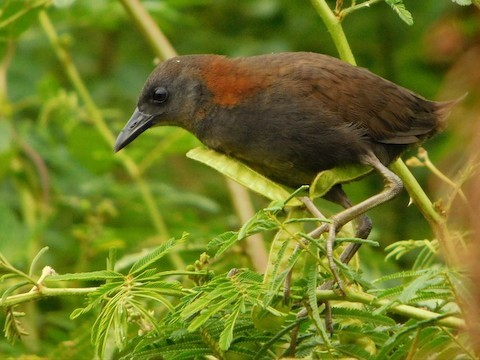
Ruddy Crake, immature, showing chestnut on nape. (Flores, Petén, Guatemala; August 16, 2017.) © Jorge Dangel

Ruddy Crake, immature, showing chestnut on nape. (Flores, Petén, Guatemala; September 1, 2017.) © Jorge Dangel
Cf. Black Rail. Immature Ruddy Crake is mostly blackish, often with some chestnut coloration on the nape, and therefore easily mistaken for the much more elusive Black Rail. There are significant differences in coloration and pattern: immature Ruddy Crake is mostly blackish-brown and unmarked, whereas Black Rail is mostly charcoal-gray and extensively dotted with white over its posterior half.
Notes
Monotypic species.
References
BirdLife International. 2016. Laterallus ruber. The IUCN Red List of Threatened Species 2016: e.T22692343A93349294. https://dx.doi.org/10.2305/IUCN.UK.2016-3.RLTS.T22692343A93349294.en. (Accessed October 19, 2020.)
eBird. 2020. eBird: An online database of bird distribution and abundance. Cornell Lab of Ornithology, Ithaca, N.Y. http://www.ebird.org. (Accessed October 19, 2020.)
Fagan, J., and O. Komar. 2016. Peterson Field Guide to the Birds of Northern Central America. Houghton Mifflin Harcourt, New York.
Howell, S.N.G., and S. Webb. 1995. A Guide to the Birds of Mexico and Northern Central America. Oxford University Press.
Ripley, S.D. 1977. Rails of the World: A Monograph of the Family Rallidae. David R. Godine, Publisher, Boston.
Taylor, B., and B. van Perlo. 1998. Rails: A Guide to the Rails, Crakes, Gallinules, and Coots of the World. Yale University Press.
Xeno-Canto. 2020. Ruddy Crake – Laterallus ruber. https://www.xeno-canto.org/species/Laterallus-ruber. (Accessed October 19, 2020.)
